Michael Martin faces Identity Crisis within Fianna Fáil
Updated / Sunday, 13 Dec 2020 07:00 Crisis
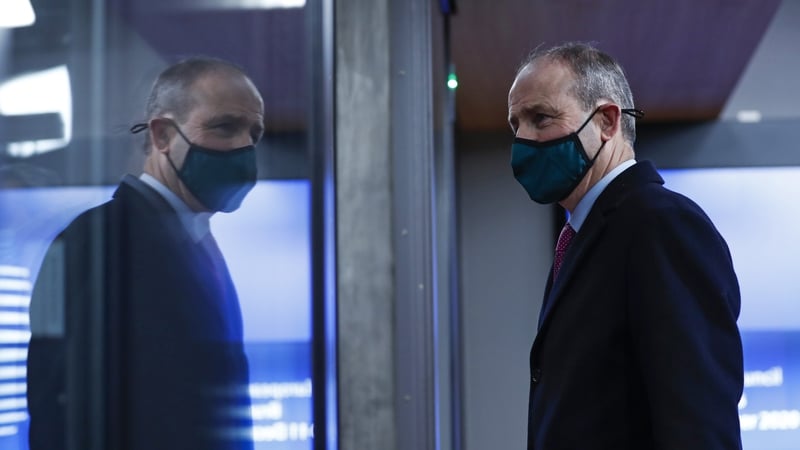
It’s a strange situation when you are coming third in a two-horse race you are officially meant to be winning.
But for Fianna Fáil, once the undisputed thoroughbred of the Irish political field, it is a reality they are – at least for now – being asked to accept.
Despite Micheál Martin achieving his lifelong ambition to become Taoiseach, its 38 seat “win” in February’s general election, and Fianna Fáil becoming the largest local government party in May 2019’s local elections, there is concern within the ‘soldiers of destiny’s’ ranks.
A 12% showing in the latest Sunday Business Post/Red C poll – just narrowly above the 11% when Brian Cowen was ousted as leader on 22 January 2011, and far behind Fine Gael’s 33% and Sinn Féin’s historic high of 30% in the same poll a fortnight ago – has suggested a current gap between Fianna Fáil and its two traditional rivals.
“Our three parties come from very different traditions. We do not and could not be expected to agree on everything.”
Concerns the party is being eaten on either side by those same rivals, and is at risk of losing its identity, has been discussed by TDs and senators worried about their own seats and the organisation’s future.
A belief by some that its well-oiled grassroots machine, once lauded by supporters and feared by enemies for its unnervingly accurate political radar, has been damaged by changes to Fianna Fáil’s internal structures is now part of a wider review of the general election campaign.
And, while the loyalty built up by leading the party back to political power after a decade in opposition means there is no clamour for an immediate change of leader, there is a whispered belief within the party ranks that if the issues are not addressed soon, the view may have changed by the time the Taoiseach role reverts to Fine Gael on 15 December 2022.
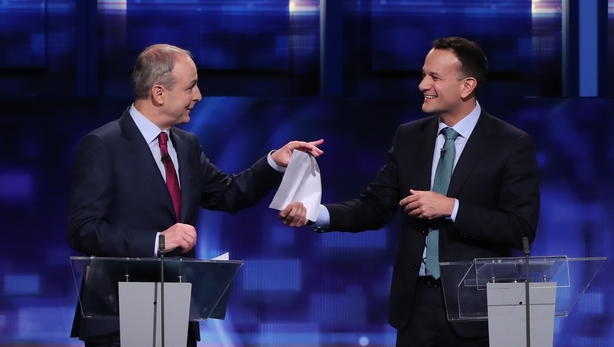
For a party leader who has skilfully survived multiple rumours over his long-term future during his decade in charge, takes a publicly dim view of opinion polls and whose supporters note entered the coalition with 75% support from party members, the concerns are officially nothing to worry about.
However, in background briefings to RTÉ News in recent days, more than a dozen of Fianna Fáil’s parliamentary party members have echoed personal concerns the party is at risk of sleep-walking itself into an electoral crisis if nothing is done.
It may have power now, they say, but unless action is taken quickly, the once king of Irish politics may be turned into a pawn come the next election cycle.
A lack of identity
For some, at the core of the party concerns is a simple issue: identity.
Or, to be more specific, the lack of one.
Over the past 12 months, Fine Gael has sought to present itself as not only a stable option in a time of turmoil, but as the anti-Sinn Féin party too.
Similarly, due to the make-up of the coalition, Sinn Féin has been given space to dominate the opposition benches, legitimately placing itself as the main rival to Government and therefore a high-profile option for voters seeking change.
This week alone, the competing stances were apparent in the Dáil public petitions committee row, media coverage of the student nurses and judges’ pay rise decisions, and increasingly on social media platforms dominated by the intensifying Fine Gael-Sinn Féin dynamic highlighted by the fallout over Sinn Féin TD for Laois-Offaly Brian Stanley’s tweets.
Fianna Fáil has sought to address this focus by attempting to place itself as the reasonable party focused on responsible governance during the pandemic – with Micheál Martin specifically raising this issue during summer’s Government formation as a reason for the coalition with Fine Gael and the Green Party, telling the Dáil in his inaugural speech as Taoiseach on 27 June:
“Recovery and renewal. These are the themes which underpin everything in the Programme for Government which has been agreed between Fianna Fáil, Fine Gael and the Green Party.
“Our three parties come from very different traditions. We do not and could not be expected to agree on everything. However, we have been able to agree on core democratic principles and on a balanced and comprehensive programme.”
Since coming to power, Mr Martin has also been to the forefront of the Shared Island Initiative, which is a €500m project lasting up to 2025 and focuses on cross-border initiatives, reconciliation and “harnessing the full potential of the Good Friday Agreement” at a time when centenary events and Brexit may give ample political ammunition for Sinn Féin.
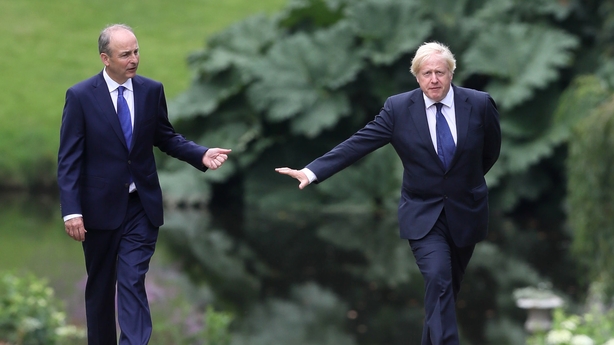
In addition, in recent weeks Fianna Fáil has begun a de facto local public housing plans “road show” around the country led by Minister for Housing and Dublin Fingal TD Darragh O’Brien, in part to underline – alongside the creation of the Department of Higher Education – the party’s traditional voter base and what it says is its democratic republican, centre left core.
“One of the problems is we don’t tell people what our identity is, as a party. What exactly we’re in Government to achieve.”
The party’s hierarchy says these points will help to blunt Fine Gael and Sinn Féin’s seemingly sharper identities since February’s general election, with a senior party source noting to RTÉ News when asked about identity concerns that 75% of Fianna Fáil members voted to enter the coalition, adding:
“We’re the middle-ground, we have the farmer and the businessman so our image is wider. Fine Gael and Sinn Féin don’t have that.”
But it is not a view a number of the party’s TDs and senators share.
While its two biggest rivals have successfully cultivated new and clearly framed identities, TDs and senators within Fianna Fáil who spoke to RTÉ News said they feel the party has so far struggled to straddle the dual roles of being in Government and defining itself as an individual entity at the same time – a key requirement for any party hoping to remain in office once it has done the hard yards to get there.
And with Fine Gael targeting Fianna Fáil voters concerned about the rise of Sinn Féin, and Sinn Féin similarly targeting traditional soft republican Fianna Fáil voters opposed to any deal with Fine Gael, it has led to concerns Fianna Fáil – despite being in power – is in reality being squeezed out.
“We’re kind of sandwiched between the two other parties [Fine Gael and Sinn Féin],” one senator explained.
“Fine Gael is deliberately occupying the space no one else wants, which is conservative and middle-to-high income earners who the party will appeal to because they’re financially comfortable and want to see the economy protected above everything.
“Then there’s the centre ground and middle-to-centre left, where a lot of parties are vying for support.
“That was us – health and housing – and until the general election the country viewed us as the alternative government. We went into the election being overly cautious, that it was ours to lose.
“But that quickly shifted to Sinn Féin because they had a good election campaign and it hasn’t shifted back.
“It’s easy to build in opposition, but if you’re on the slide in Government it’s tricky. We need to re-assess our image because we have to deliver come the next election, be judged on what we do.
“We have to have ownership of our own policies,” the senator said.
The view is shared by a number of TDs, including one who said while Fine Gael has successfully carved out a clear party identity while in Government, Fianna Fáil has become indistinguishable from the coalition itself – potentially leaving it open to all of the criticism without as many of the party-specific gains it feels it deserves.
“One of the problems is we don’t tell people what our identity is, as a party. What exactly we’re in Government to achieve. We’re a republican party, we’re for housing, we’re traditional centre left.
“Maybe there’ll be space to say that after the pandemic, but right now that’s not being said, it’s just a sense of fatalism and like watching a slow train crash,” the TD said.
In a three-horse electoral race where it is widely felt two larger parties will eventually emerge from the 2020 general election result of 38 seats for Fianna Fáil, 37 for Sinn Féin and 35 for Fine Gael, this lack of identity issue spells potential trouble for Micheál Martin’s party, another TD argued:
“We’ve a dilemma because our traditional voters who want housing and health and soft republicanism and commemorations are turning to Sinn Féin, and the other wing are turning to Fine Gael.
“We’d always be proud of being a broad church, a big tent party.
“But if you have two strong identities either side of you, you need to adapt, you need to be clear to people what exactly our own identity is. And we’re not doing that, either on the ground or in the Dáil.”
‘An analogue party in a digital age’
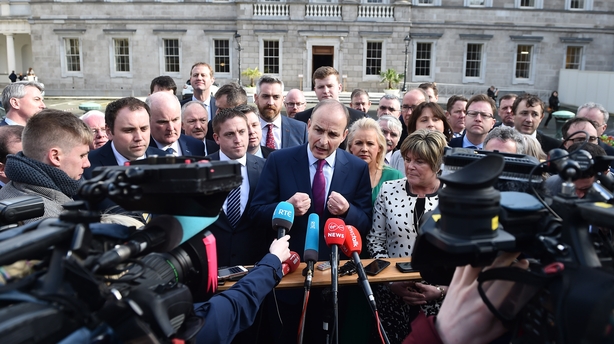
Much of the claimed identity dilemma raised by TDs and senators is caused, they believe, by the party’s current communications strategy towards voters, on social media and within Leinster House itself.
Speaking to RTÉ News, a number of party members said many of Fianna Fáil’s current difficulties could be addressed by doing what Fianna Fáil traditionally does best – keeping a close ear to the ground locally and adapting its identity to mirror the changing electoral mood.
Getting ahead of an issue before it becomes a problem was a tactic Fianna Fáil of the past was well known for excelling at over generations. But, according to some members, the previously well-oiled local machine central to this tactic could do with some fine tuning.
Asked about what is happening in the party, a number of TDs specifically raised the decision to change in recent years to a one member one vote local membership system, saying it has led to a dilution of the structures that in past eras have been key to quickly feeding information up the chain of command.
That change, one TD argued, has meant “the old structure doesn’t exist anymore in some constituencies” and that there is “no clear understanding about who to speak to in every parish”.
A senior party figure responded to the claim by telling RTÉ News “when the one member one vote change happened [at the ard fhéis in 2013], only one person voted against it, I know that because I remember where he was sitting, this was supported by the members”.
But those concerned about the situation argue that, whether supported at the time or not, the situation means information on likely future voter trends and the speed in realising how policies are seen – two of the biggest weapons in the traditional Fianna Fáil armoury – has now slowed down.
“He gave a good speech, he was calm and practical and came across well, but it was just forgotten about then. That was an open goal, and we missed.”
The concern over the traditional political communications route is not, members argue, occurring at the expense of a more modern approach, however.
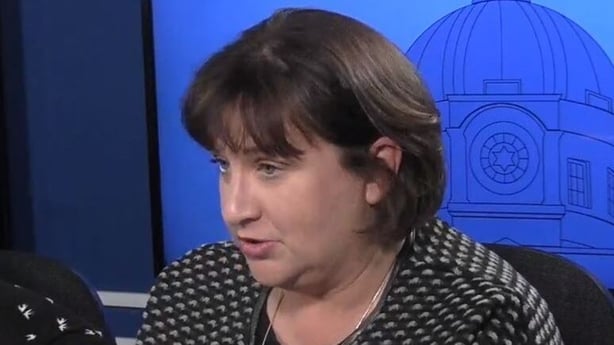
In an interview with the Irish Examiner at the start of December, Minister of State for Disabilities and Galway East TD Anne Rabbitte described Fianna Fáil as being an “analogue party in a digital age” when it comes to the party’s media strategy in a world increasingly influenced by social media.
The Fianna Fáil hierarchy acknowledges “comms [communications] is an issue”, but argue this is in part because “when you go into Government there’s a natural lag, there’s a natural gap because people go from the press office to advisor roles” – an issue referencing a slew of recent party press office changes.
Others within the party argue the public messages from Fianna Fáil ministers remain clear and concise.
They say the party is producing accessible social media videos – most recently by Minister for Health and Wicklow TD Stephen Donnelly this week over the latest Covid-19 plans – and that it is sometimes better to steer clear of the more aggressive aspects of the social media world which can be off-putting for middle-ground voters.
But that view appears to be in a minority within the party, with a number of Deputy Rabbitte’s TD and senator colleagues supporting her comments – and pointing to a series of recent press office, advisor and other changes within the party to back-up their concerns.
“We need to get the communications right. And the big problem is we’re not at the races on that, we’re not even at the race course,” one senior TD told RTÉ News, citing the recent failure to “get ahead” of the student nurses motion and the decision to announce easing of Covid-19 restrictions on the evening of the Late Late Toy Show as poor media management.
“Micheál [Martin] is aware of the need for messaging, it’s just he’s doing it from the wrong era.
“The Covid restrictions should have been announced on the Thursday and given us 24 hours of positive news, but instead it was on Friday evening and within two hours no one was talking about it, it was all the Toy Show online.
“He gave a good speech, he was calm and practical and came across well, but it was just forgotten about then. That was an open goal, and we missed.
“It was the same with the student nurses motion. We knew it was coming, but there was zero communications from the party on what to say if we were asked or what to say on social media, and of course we’re going to be asked.
“There was no communication for 12 hours. It’s just my view, but the party doesn’t understand social media. It’s not just tweets, it frames stories and we’re miles behind on it,” the TD said.
Within Leinster House, some Fianna Fáil members believe a third similar communications issue exists, with a claimed disconnect between the hierarchy and backbench TDs.
It has long stopped being a surprise that information is consistently leaked from the supposedly private weekly parliamentary party meetings.
This is nothing new, and not confined to Fianna Fáil – with both it and Fine Gael regularly seeing private in-house discussions aired very much in public by journalists within hours, sometimes minutes, of discussions taking place.
In part due to this issue, the weekly meetings which are officially meant to be an opportunity for party leaders to genuinely engage with all TDs and senators have changed dynamic among the two traditional power houses of Irish politics.
But, say some Fianna Fáil members, while in Fine Gael the discussions have as a result become at times stage managed, in their own party the issue has led to a disconnect between the party hierarchy and its troops on the ground.
“At a serious level, the parliamentary party is gone because there’s no influence or input sought from backbenchers anymore. It’s all done by a small group at the top, so it’s never really anything except frontbench policy,” said one TD.
While senior Fianna Fáil figures accept difficulties exist in connecting with backbenchers, one high-ranking official said this is more because “you couldn’t get around in Level Five [Covid-19 restrictions], it’s difficult even in Level Three, there’s no chats in corridors and a lot of the time they’re [TDs] in the convention centre”.
The official added that while in normal times this situation could be addressed by Micheál Martin visiting constituencies, this has been impossible during Covid-19 – a situation that may change in the months to come.
But some TDs and senators disagree, with one claiming to RTÉ News the situation means “information isn’t being passed up the ladder” and that “the problem is the lads at the top have cut ties with listening to the rest of us”.
Far from ‘poll’ position
Opinion polls are based on the views of people at set points in time and, by their very nature, should be taken with more than a grain of salt.
But they should never be fully ignored either, with Fianna Fáil TDs and senators who spoke to RTÉ News saying the concerns over a claimed lack of a clear identity and similarly disputed communication issues have contributed to – if not quite caused – recent poll showings.
“I think it’s bizarre and unexplainable how rapidly we’ve declined. This time last year we were thinking we were on course for 50-60 seats.”
Two weekends ago the latest Sunday Business Post/Red C poll placed Fianna Fáil on 12% support, narrowly above the 11% rating when Brian Cowen was ousted as leader on 22 January 2011, and far behind Fine Gael on 33% and Sinn Féin on 30%.
It may be suggested the poll shows Fianna Fáil gained 1% on the previous poll in the series, Fine Gael fell 4% and that Sinn Féin’s 3% rise to an historic Red C poll high may not be sustained. But that would risk missing the point.
While recent elections at home and abroad have shown opinion polls need to be viewed with a sceptical mind, the finer details of the same poll underline a worrying trend for Fianna Fáil that is more difficult to ignore.
In the 18 to 34-year-old age group, the poll suggested Fianna Fáil stands at just 10% support compared to Fine Gael’s 19% and Sinn Féin’s 41%.
In the 45 to 54-year-old age group, it suggested Fianna Fáil is similarly far behind on 11% compared to Fine Gael’s 30% and Sinn Féin’s 38%.
And in Dublin, an area the party has fought for a decade to regain a foothold, the poll again suggested Fianna Fáil has just 7% support – behind Sinn Féin’s 30%, Fine Gael’s 36% and the Green Party’s 8% backing.
A senior party official downplayed any significance to the poll showings, saying “if we were worried about the polls then we would’ve just given up in 2011”, and arguing poll mechanism changes mean they now include online questions as well as phone calls – potentially impacting on the accuracy of poll showings.
But one TD argued otherwise, noting the latest poll showings compared to the lead-up to February’s general election, saying: “I think it’s bizarre and unexplainable how rapidly we’ve declined. This time last year we were thinking we were on course for 50-60 seats.”
Where it leaves the party if no steps are taken to address the apparent problems is a matter for debate, and one the parliamentary party is not universally agreed on.
Asked about the poll ratings and the wider issues affecting the party, one TD who has been vocal about their concerns in the past said the party needs to learn the lessons of previous eras.
The TD said past politics shows it is better electorally to be loved by core voters and hated by opponents than to be the middle-ground, issues the TD said both Fine Gael and Sinn Féin appear to have learned.
And the TD added that while Ireland has been generally considered a two-and-half-party system for most of the State’s existence, the make-up of these parties is – in the TD’s view at least – now changing.
“We’re going to become the new Labour if we’re not careful. We’re replacing Labour, Fine Gael has replaced the right side of us, and Sinn Féin has replaced the left side of us.
“There’s two big parties coming out of this, but at the moment we’re in a place in the polls where we were in 2010 and 2011, worse even.”
Another senior TD was less downbeat about the situation, but remained concerned, telling RTÉ News:
“There’s a lot more buffers between us and irrelevancy the way it went for Labour or the PDs, we’ve 15,000 members of the party around the country, 38 TDs, we’re the largest party in local government.
“But we probably only have a couple of years to save this.”
‘Lessons’ and leadership
The issues, of course, have not gone unnoticed by the Fianna Fáil hierarchy, and will feed into a recently commenced review of the party’s general election campaign and performance which began last month and will conclude in early spring.
The nine-member review team – which is chaired by Laois-Offaly TD Seán Fleming and will include TDs, senators and members of the ard chomhairle as well as independent political experts outside the party – is officially focused on the 2019 local and European elections and February’s general election.
In many ways this is nothing out of the ordinary, as most parties conduct post-mortem reviews on previous campaigns in an effort to better understand where they succeeded and where they may have room for improvement.
But what will be watched carefully will be how the review assesses identity both within the party and among potential voters; communication and social media performance; and the strength or weakness of the local party machine.
One issue that won’t be part of any review is the party leadership.
“There’s a lot of disillusioned TDs who were never happy with the deal with Fine Gael, of how it’s gone, and as all this goes on, that group grows.”
It will come as a surprise to exactly no one that ever since Dublin Bay South TD Jim O’Callaghan declined Micheál Martin’s offer of a minister of state role in the Department of Justice when the Government was formed at the end of June, there has been a shadow stalking Mr Martin.
A long one with a Dublin Bay South accent, to be precise.
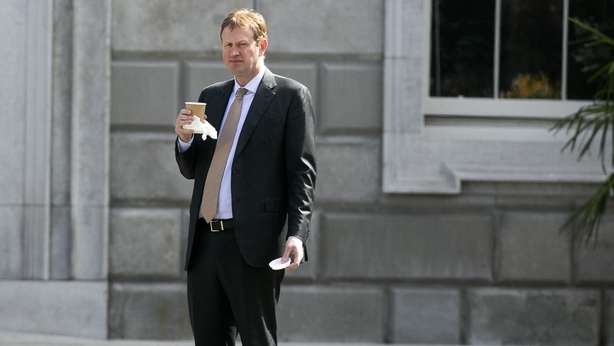
While Mr Martin and Mr O’Callaghan’s relationship is said to be “fine”, the vast majority of TDs and senators asked about the situation noted Mr O’Callaghan has made sure to keep in touch with party colleagues, in person and online.
The pandemic means no one is expecting Mr O’Callaghan – or, for that matter, other rumoured contenders Minister for Public Expenditure Michael McGrath of Cork South Central and Minister for Housing Darragh O’Brien of Dublin Fingal – to make any significant moves for at least a year at the earliest.
Indeed, most members do not expect any potential leadership intentions, if they occur at all, to only be indicated in the months before the rotating taoiseach role switches back to Fine Gael on 15 December 2022.
One TD and supporter of Mr Martin said despite the difficulties currently facing the party “there is a feeling he’s owed time, he brought the party back from nowhere and he’s earned space to respond, you hear the disgruntled voices but they’re the most vocal, most of the parliamentary party supports Micheál [Martin]”.
This view was repeated by a senior party member, who said “Micheál survived this in 2011, 2012, 2014 we had a good local election, then 2015, 2016 after the election, 2018…” and noting rumours around Jim O’Callaghan by saying:
“I’m not convinced if Jim will go for it or not. They [TDs] should ask themselves if jobs for them will suddenly appear if he does, or do they want an election? Do they really think Fine Gael will let a new leader bed in?”
But others are less convinced, with one senior TD noting:
“There’s a lot of disillusioned TDs who were never happy with the deal with Fine Gael, of how it’s gone, and as all this goes on, that group grows.”
For now, despite the difficulties in Fianna Fáil, there is no threat to Micheál Martin’s position.
Being Taoiseach and holding the keys to power, having a slim but still existent Dáil seat lead over other rivals, built up loyalty due to re-building the party over a decade, and a pandemic have a funny way of calming voter appetite for imminent political drama, and therefore colleagues’ ambitions.
But unlike in the period between the 2014 local elections and 2016 general election, and the most difficult periods of the 2016-2020 confidence and supply deal with Fine Gael – both of which Mr Martin skilfully survived – there is a view within Fianna Fáil the current discontent within the ranks is a different animal.
A crowded political party field.
At least one potential leadership rival outside the cabinet tent.
And a party leader who has now achieved his lifetime ambition to become Taoiseach and has a set-in-stone end point for that period in office draws one conclusion:
What happens next in Fianna Fáil should be watched closely in the months to come.
